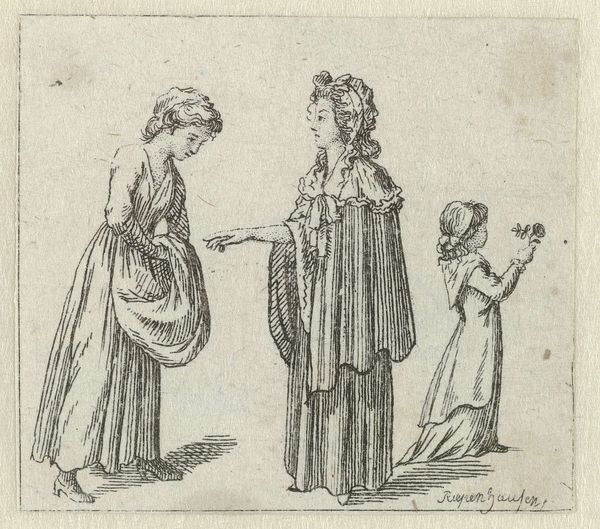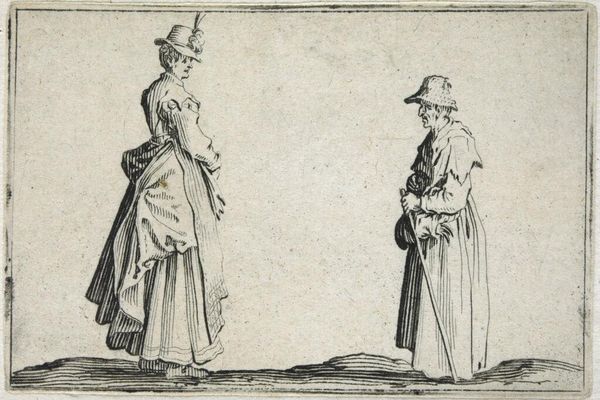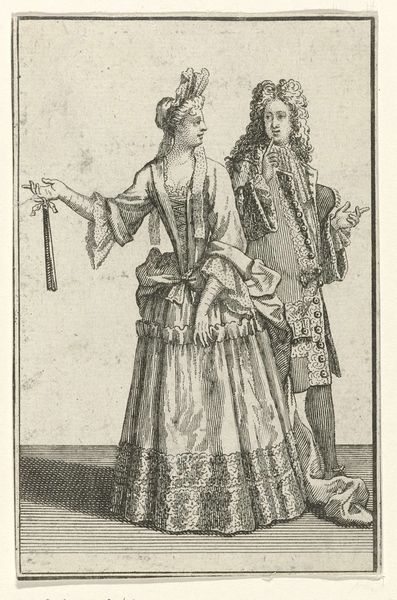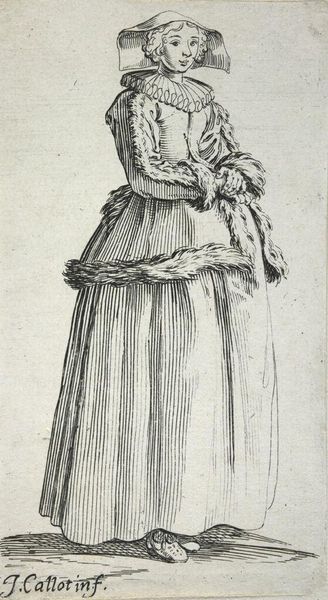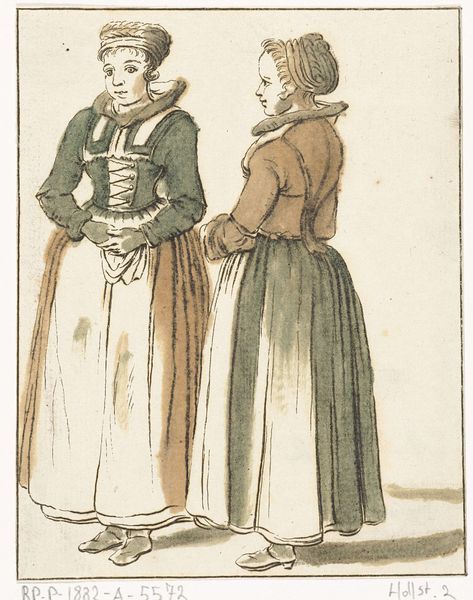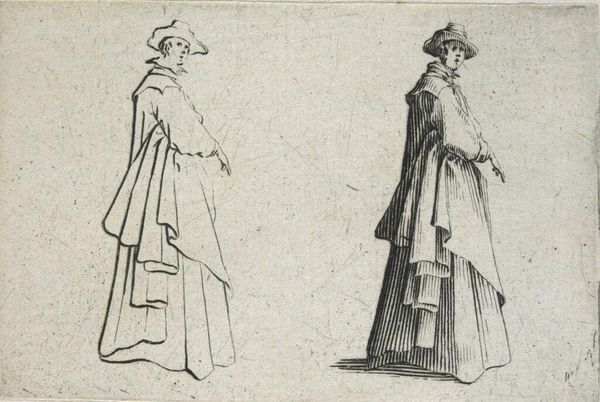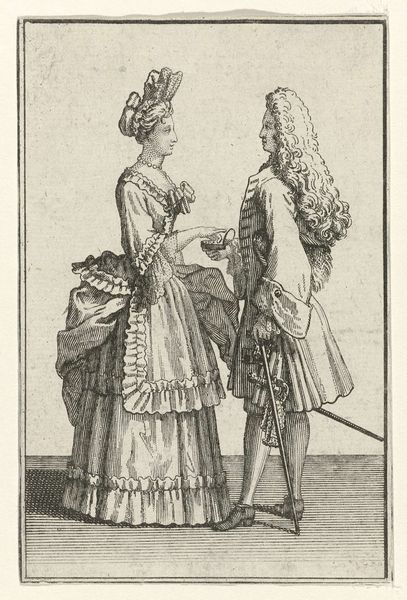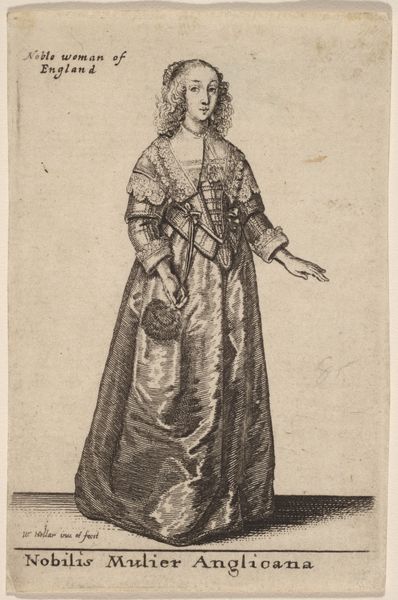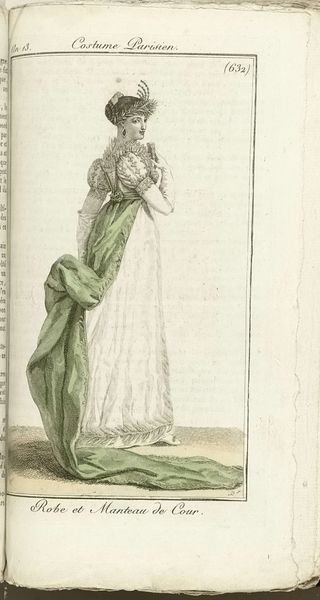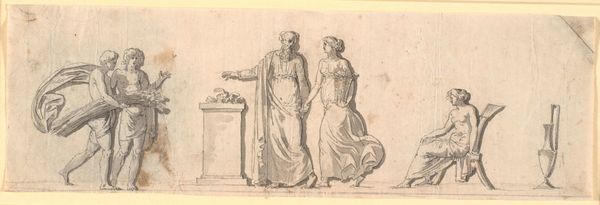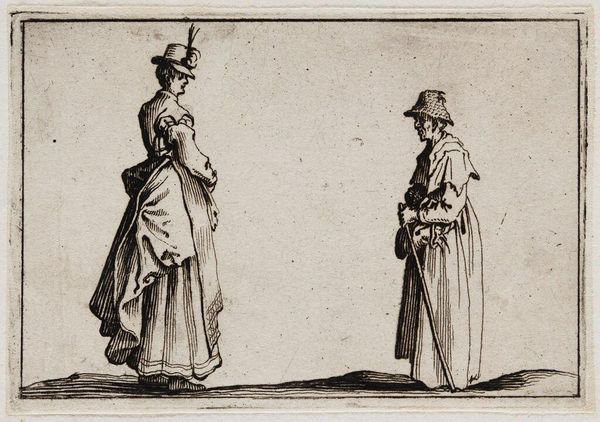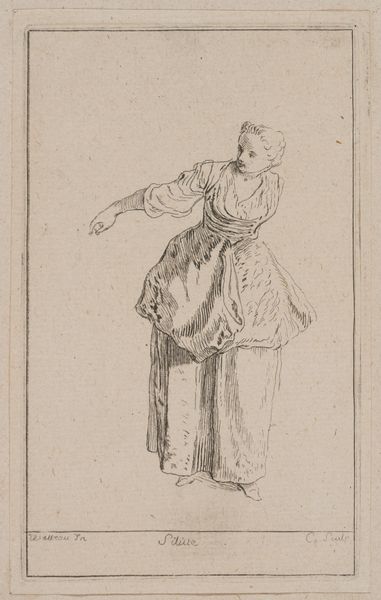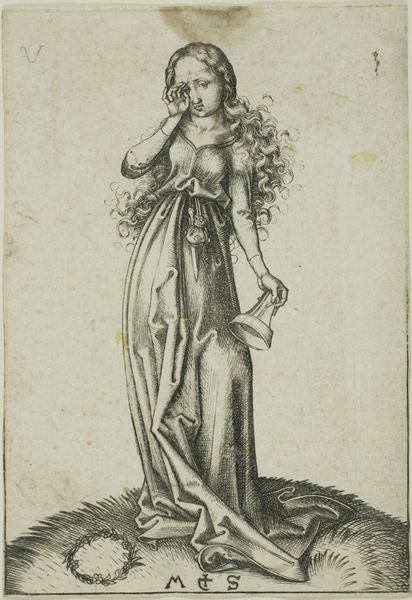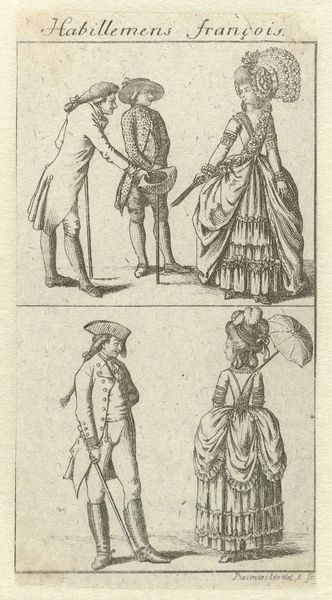
Habillemens de Leipsic. ca. 1785-1786: twee vrouwen met muts en wandelstok c. 1785 - 1786
0:00
0:00
Dimensions: height 45 mm, width 51 mm
Copyright: Rijks Museum: Open Domain
Ernst Ludwig Riepenhausen made this print, "Habillemens de Leipsic," around 1785, using etching and engraving. These are intaglio processes, meaning the artist incises lines into a metal plate, which then hold ink and transfer the image to paper under pressure. Look closely, and you can see the crisp, deliberate nature of the lines. The textures of the women's dresses and hair are meticulously described. This was a reproductive medium, designed to circulate widely. It's worth considering the social context. Fashion was increasingly important as a marker of class and status. Prints like this helped to disseminate those standards. The very act of replicating fashion trends through printmaking speaks to the rise of consumer culture, where images could drive desire and, ultimately, production. The labor involved in creating the garments themselves—the weaving, tailoring, and embellishments—is implied, pointing to the complex economies behind even seemingly simple depictions of dress. This artwork challenges traditional distinctions between fine art and craft, emphasizing the importance of materials, making, and context in understanding its full meaning.
Comments
No comments
Be the first to comment and join the conversation on the ultimate creative platform.
